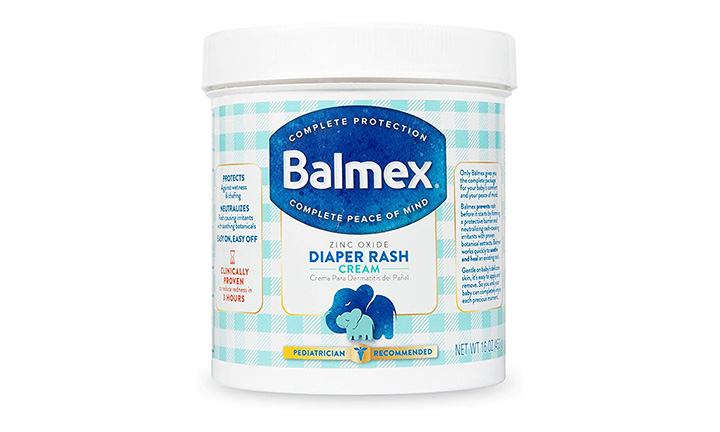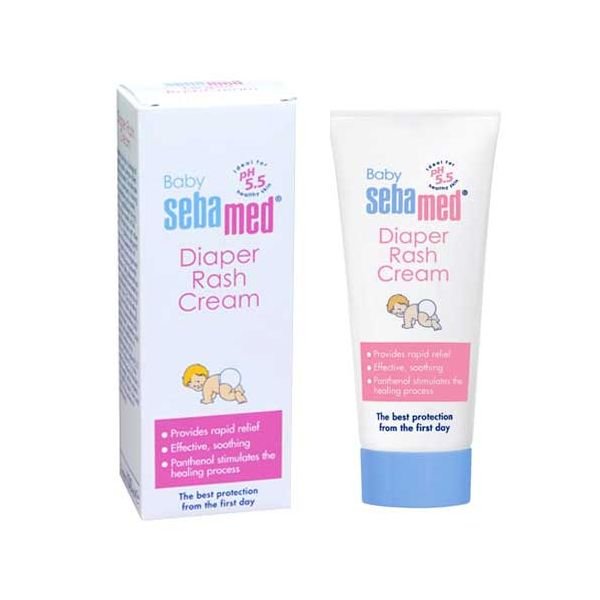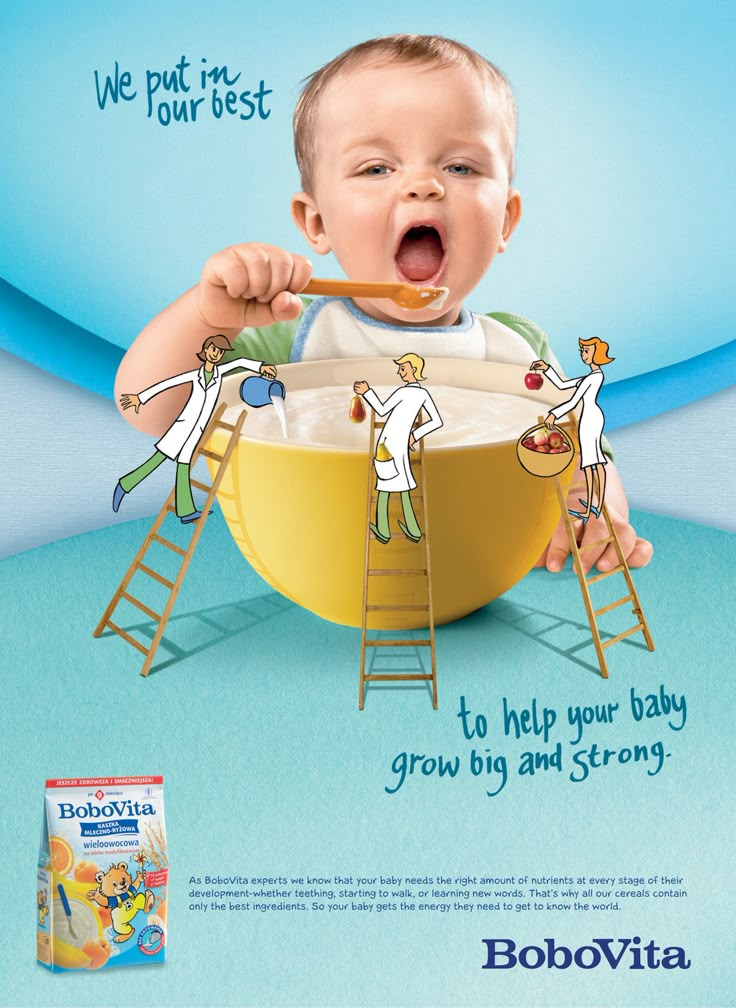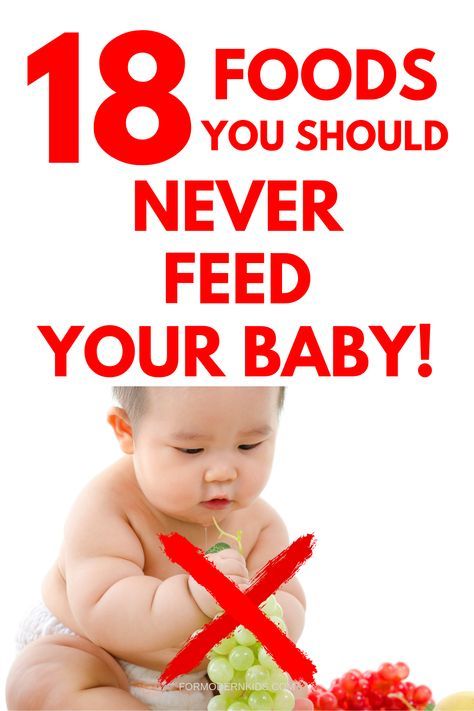Acidic baby foods diaper rash
Baby Bottoms 101: Diet & Diaper Rash
Diaper rash is one of those pesky problems every mom wants to avoid, because angry red bumps or an ugly rash on your baby’s diaper area is not something mama wants to see. But despite your best efforts, diaper rash happens.
Now what? Well, you’re a mom, so you can definitely handle it. But what’s the best way?
How do you get rid of diaper rash quickly, so you can get back to funny faces, gummy grins, happy diaper changes and giggles?
Buh-bye with Boudreaux’s Butt Paste®When you spot diaper rash, your first line of defense is to use Boudreaux’s Butt Paste®. It eases symptoms and helps treat and protect baby’s sensitive skin. For fast results, try Maximum Strength Boudreaux’s Butt Paste®, because it’s clinically shown to provide immediate soothing relief from rash discomfort. Moms also say they noticed visible improvements of some of the worst symptoms of diaper rash in as little as three hours.
You can make changes to your baby’s diet that will help ease diaper rash. Certain types of food can aggravate her already sensitive skin and actually make diaper rash symptoms worse. Acidic foods are often to blame for making diaper rash worse. Foods high in fat and sugar can also be problematic. On the flip side, starchy foods can help ease diaper rash.
Acidic foods to avoidIf your baby had diaper rash, think about cutting these foods out of her diet until her symptoms improve:
- Citrus fruits and juices
- Tomatoes and tomato-based products (this includes foods like spaghetti sauce)
- Strawberries
- Pineapple
- Grapes
- Raisins
When your baby has diaper rash, the last thing you want to add to the equation is diarrhea or loose stools. Every baby is different, but the following foods tend to trigger diarrhea in babies, so it’s a good idea to avoid them:
- Milk-based formula (cow’s milk)
- Apple juice
- Pear juice
- Cherry juice
- Apricots
- Peaches
- Pears
- Apricots
- Prunes and prune juice
Starches are easy to digest and add bulk to the stool, so that’s why they are A-Okay for baby to eat if she’s struggling with diaper rash symptoms. Babies who are eating solid foods can eat pasta and fermented whole grains. Other foods that are easy on diaper rash are chopped up soft-boiled eggs and plain yogurt with probiatics.
Babies who are eating solid foods can eat pasta and fermented whole grains. Other foods that are easy on diaper rash are chopped up soft-boiled eggs and plain yogurt with probiatics.
Remember, baby cereal doesn’t just have to be old-school rice cereal. She can try cereal made from oats, quinoa, brown rice or other whole grains. Other starchy options for baby include the following foods:
- Potatoes
- Rice
- Crackers
- Bread or toast
- Plantain
- Beans or lentils
If your baby has ever suffered from diarrhea, you’ve probably heard of the BRAT diet. This bland, easy-to-digest diet is used to bulk up baby’s stools. Since easing diaper rash symptoms is similar, the B.R.A.T. diet works too. Just remember to ease up on foods that bulk up her diet once her diaper rash symptoms improve, so she doesn’t get constipated.
B. = Banana
R. = Rice
A. = Applesauce
T. = Toast
Moms often refer to Boudreaux’s Butt Paste® as a “miracle ointment” that eases diaper rash within hours. If you’ve had a “Wow, this stuff is magic!” moment with Boudreaux’s Butt Paste®, share your story with us in the comments section on our Facebook page.
If you’ve had a “Wow, this stuff is magic!” moment with Boudreaux’s Butt Paste®, share your story with us in the comments section on our Facebook page.
Solid Foods and Diaper Rash
Your baby is bursting into tears, her bottom is pink and puffy, and you’re hurting at the thought of her being in any kind of pain. This heart-wrenching moment is probably brought to you by diaper rash, that evil condition that irritates your baby’s tushie, oftentimes accompanied by red spots or bumps. Diaper rash appears on your baby’s rump for many potential reasons, and if you recently started adding solid foods to your baby’s menu, there’s a possibility that you’ll be seeing more of it. Solid foods affect your little one’s digestion in many different ways, and while diaper rash is a fact of life, you should keep an eye out for repeat offender foods that seem to affect your baby more than others. Also keep in mind that certain kinds of foods are more likely to cause diaper rashes than others. Here are some examples:
Also keep in mind that certain kinds of foods are more likely to cause diaper rashes than others. Here are some examples:
-
Citruses
Acidic foods can be a major culprit if your baby is suffering from diaper rash. The acidity of these fruits can be a little hard for your baby’s delicate tummy to digest. Whether frequent diaper rashes are an issue or not, opt to wait about a year until you introduce citruses such as limes, grapefruits, and oranges to your baby’s diet.
-
Tomatoes
While they don’t have the same acidic taste of citruses, tomatoes are acidic as well—avoid these and tomato-based sauces.
-
Strawberries
Strawberries are also acidic. Like most berries, they’re sweet and babies usually enjoy them, but if diaper rash is an issue, they could also be to blame.
-
Prunes and plums
If a food causes diarrhea in adults, it could cause it for babies as well. When your little one’s poopsies are frequent and watery, diaper rash will probably be lurking around the corner! Avoid foods like prunes, plums, grapes and apricots if diarrhea becomes an issue.

-
Dairy products
Yogurt is great, but try keeping other cow-based dairy products out of the mix if your little one is struggling.
-
Proteins
Some babies are sensitive to protein in foods like wheat (such as oatmeal) and beans.
There are a few other things you can do that can help you solve these mysterious cases of diaper rash. When you introduce solid foods, follow the three-day rule: Only feed your baby one kind of food for three days before switching to a new one. This will give their digestive system a chance to adapt. Be adamant about this if your little one is having frequent diaper rashes—it’ll also give you the chance to single out the foods and figure out which one is the issue. Also, try keeping a food journal. If diaper rashes become an issue, you’ll have an easier time singling out the potential culprits by going to the journal and looking for repeat offenders.
Remember that there’s no need to nix all of these foods from your grocery list just yet. They’re not all necessarily going to cause diaper rash! It’s when you begin to notice diaper rashes that it may be time to reconsider these foods and start playing detective. Being aware of what foods don’t sit well with your little one will help ensure her transition into solid foods is as smooth as a baby’s bottom.
They’re not all necessarily going to cause diaper rash! It’s when you begin to notice diaper rashes that it may be time to reconsider these foods and start playing detective. Being aware of what foods don’t sit well with your little one will help ensure her transition into solid foods is as smooth as a baby’s bottom.
How to treat diaper rash in newborns
Types and degrees of diaper rash in newborns
Babies have several types of diaper rash. Consider them:
1. Diaper dermatitis, in which skin irritation occurs due to contact with a diaper or diaper.
2. Impetigo. This disease is infectious. In this case, diaper rash appears against the background of infection with a bacterial infection.
3. Eczema. The disease is most often associated with an allergic reaction to foods that the mother of the baby consumes, to milk formula or hygiene products. nine0005
Sometimes the cause of eczema is dysbacteriosis.
Depending on the severity of clinical signs, 3 degrees of diaper rash are distinguished.
The first stage is characterized by a change in skin color - it turns red, but there are no watery vesicles and microdamages on it. At the same time, the newborn almost does not feel any discomfort.
The second degree of diaper rash is characterized by more pronounced redness and the appearance of microcracks and small bubbles with watery contents. The child experiences itching and pain. nine0007 In the third stage, the symptoms become more pronounced. Quite deep cracks, ulcers and abscesses form on the skin. Detachment of the epidermis is observed. Due to the addition of a secondary infection, an increase in temperature is possible.
Causes of diaper rash in newborns on the buttocks
In most cases, the disease develops due to improper care of the child. Some mothers neglect the pediatrician's recommendation for air baths. After changing a diaper, washing and bathing, the skin must "breathe" for at least 15 minutes, otherwise it will rot. Excess moisture and prolonged contact of the skin with urine and feces are the main enemies of a baby's tender ass. The secretions of a child contain ammonia, salts, as well as enzymes that irritate the epidermis. nine0005
Excess moisture and prolonged contact of the skin with urine and feces are the main enemies of a baby's tender ass. The secretions of a child contain ammonia, salts, as well as enzymes that irritate the epidermis. nine0005
There are other causes of diaper rash:
1. Use cheap diapers. They do not retain moisture well and rub the baby's skin in the inguinal folds.
2. Incorrect diaper size or infrequent diaper changes.
3. Dysbacteriosis in infants. In this case, the stool becomes acidic and irritates the skin even more.
4. Insufficient hygiene of the genitals.
5. Allergy.
6. Overheating of the baby. If the child is dressed too warmly, his skin is constantly damp with sweat. At the slightest friction, irritation appears on it. nine0005
Clinical guidelines for the management of diaper rash in newborns
Having found redness in the groin area and between the buttocks in a newborn, you need to show it to the pediatrician. The doctor will prescribe treatment, taking into account the degree of skin damage. In case of a mild course of the disease, it is enough to follow the following recommendations:
The doctor will prescribe treatment, taking into account the degree of skin damage. In case of a mild course of the disease, it is enough to follow the following recommendations:
1. Change the diaper every 3 hours;
2. Wash the baby's bottom 3-4 times a day;
3. After each washing or bathing, do air baths lasting about 15-20 minutes; nine0007 4. Use diaper cream;
5. Do not dress the newborn too warmly;
6. To relieve redness, you can apply a cream containing panthenol.
Treatment of diaper rash of the second degree requires a lot of effort. In this case, diapers should be abandoned for some time in order to eliminate the irritating factor. A doctor should choose a remedy for treating diaper rash in newborns. If the focus of inflammation is weeping, it is recommended to use ointments with a drying effect. As a rule, their composition includes zinc, talc and tannin. If there are cracks on the skin, healing agents are used, such as Bepanten or Drapolen. nine0007 Care for diaper rash in third-degree newborns is more complicated. In the presence of pustules, treatment with brilliant green is recommended, as well as antibacterial or antifungal ointments in combination with healing and drying agents. You can make lotions with a solution of silver nitrate, and then apply zinc paste or synthomycin emulsion. If during the examination it turns out that the cause of diaper rash was an allergy, the doctor will prescribe antihistamines.
nine0007 Care for diaper rash in third-degree newborns is more complicated. In the presence of pustules, treatment with brilliant green is recommended, as well as antibacterial or antifungal ointments in combination with healing and drying agents. You can make lotions with a solution of silver nitrate, and then apply zinc paste or synthomycin emulsion. If during the examination it turns out that the cause of diaper rash was an allergy, the doctor will prescribe antihistamines.
How to get rid of diaper rash in newborns with folk remedies
At the first sign of the appearance of diaper rash, you can resort to the help of folk remedies. Herbal decoctions, potassium permanganate and vegetable oils will help to cope with this problem.
To understand the question of how to smear a newborn from diaper rash, user reviews will help. Many mothers were satisfied with the effect of heat-treated olive or sunflower oil. The product is poured into an enameled bowl, placed in a water bath, brought to a boil and cooled. The oil is applied in a thin layer on the foci of inflammation after each washing and drying of the skin. nine0005
The oil is applied in a thin layer on the foci of inflammation after each washing and drying of the skin. nine0005
Attention! Before treating diaper rash in newborns with folk remedies, you need to show the baby to the pediatrician. Skin problems can be caused by more serious causes than overheating and mechanical stress, so a doctor's consultation is necessary.
Baths with herbal infusions will help cure diaper rash in newborns on the ass of the first and second degree. It is necessary to brew a glass of oak bark or string with two liters of boiling water, put in a water bath and simmer for 15 minutes. Pour the decoction filtered through cheesecloth into a bath, dilute with water and bathe the child. nine0007 Attention! Given that herbs can cause an allergic reaction, it is best to do a test before bathing. It is necessary to lubricate a small area of skin on the baby’s wrist with a ready-made decoction and wait - if redness appears, then it is dangerous to use such an herb.
Potassium permanganate is another effective remedy for diaper rash. A few crystals are added to the bath for bathing a baby so that the water acquires a light pink hue, and the baby is washed. It is advisable to do this every evening until irritation and redness disappear. nine0005
Memo on the prevention of diaper rash in a newborn
It is much easier to prevent diaper rash in a newborn than to treat the disease. Steps to take to keep baby's skin healthy:
1. Change the diaper every 3 hours.
2. Wash your child more often.
3. Arrange air baths several times a day.
4. Use powder or diaper cream.
5. Bathe the child in a bath with the addition of extracts or decoctions of herbs - succession, chamomile. nine0007 6. Use wet wipes designed specifically for newborns.
7. Choose quality diapers of the right size.
8. Use clothes made of natural breathable fabric.
To prevent diaper rash, the skin of a newborn is treated with baby cream or boiled vegetable oil. A nursing mother needs to exclude from her menu products that can cause allergies in a baby.
A nursing mother needs to exclude from her menu products that can cause allergies in a baby.
Diaper rash under the breast - causes, symptoms, diagnosis and treatment
Intertrigo under the breast is an infectious and inflammatory skin disease that occurs in the submammary folds due to increased humidity and infection. Intertrigo predisposes to personal hygiene and excessive sweating. It manifests itself in the form of redness, which is limited to areas of contact skin, maceration with an unpleasant odor, whitish or purulent plaque. Diagnosis is based on clinical data, supplemented by microbiological examination. For treatment, local remedies with antiseptic, drying, antibacterial action are used. nine0005
General information
Diaper rash, or intertriginous dermatitis, is more commonly diagnosed in women. Rarely, the disease appears in men with gynecomastia and obesity, as well as concomitant diabetes mellitus. The frequency of diaper rash in the folds of the mammary glands among the female increases with age. This is due to characteristic changes in skin function, a decrease in immunity and an increase in breast volume. Many women refuse to use a bra with age, which increases the risk of developing diaper rash with a large mammary gland. nine0005
This is due to characteristic changes in skin function, a decrease in immunity and an increase in breast volume. Many women refuse to use a bra with age, which increases the risk of developing diaper rash with a large mammary gland. nine0005
Diaper rash under the breast
Causes
Diaper rash under the breast requires a combination of several factors to develop. Under normal conditions, sweat has bactericidal properties and prevents the growth of microorganisms. But with a combination of sweating, some systemic diseases or special conditions against the background of skin friction under the breast, diaper rash occurs. The main causes of pathology are:
- Hyperhidrosis . With increased sweating and lack of skin ventilation, uric acid, urea, chlorides remain on the surface of the skin, causing damage, maceration. In lactating women, the temperature of the mammary glands rises, so sweating increases in the folds under them. nine0094
- Personal hygiene disorders .
 Refusal to wear a bra for large breasts leads to mastoptosis, the skin inside the fold is tightly in contact, does not allow sweat to evaporate. If a woman ignores water procedures, especially in the heat, sweat becomes a breeding ground for bacteria.
Refusal to wear a bra for large breasts leads to mastoptosis, the skin inside the fold is tightly in contact, does not allow sweat to evaporate. If a woman ignores water procedures, especially in the heat, sweat becomes a breeding ground for bacteria. - Endocrine pathologies . Sweating and the risk of diaper rash increase with hyperthyroidism, and in patients with diabetes mellitus, Itsenko-Cushing's syndrome, the pathology is often combined with a fungal or microbial infection. Skin candidiasis in diabetes can develop not only under the breast, but also in any skin folds. nine0094
- Decreased immunity . With age, there is a natural decrease in immune defense, a change in the composition of sweat. Its reaction can change from acidic to neutral. Therefore, older women with macromastia are more likely to develop intertriginous dermatitis.
- Pregnancy . In pregnant women, the growing belly and mammary glands form an area of close contact.
 In this case, a cotton bra can protect against skin thorns. If not worn, diaper rash may appear under the breasts. The risk also increases from a natural decrease in immunity in pregnant women. nine0094
In this case, a cotton bra can protect against skin thorns. If not worn, diaper rash may appear under the breasts. The risk also increases from a natural decrease in immunity in pregnant women. nine0094
Pathogenesis
Sweat glands produce sweat continuously. On average, up to 800 ml of it is released per day, and with increased sweating, much more. In the folds of the dermis, it does not evaporate, but mixes with the secretion of the sebaceous glands and becomes a breeding ground for bacteria. Constant humidity, friction during movement creates areas of maceration. The skin becomes inflamed, swelling and redness occur.
Active bacterial growth increases damage. Small vesicles with purulent contents appear in the dermis. Candidiasis infection may join. The fungus infects the upper layer of the dermis, forms colonies that macroscopically look like a white coating. When it is separated with a spatula or cotton swab, a smooth layer of skin is exposed, which bleeds easily. nine0005
nine0005
With successful treatment, the surface of the skin begins to dry out and may begin to peel off. Healing occurs without the formation of a rough scar, diaper rash does not damage the basal layer of the skin. But with the preservation of risk factors, uncontrolled diabetes, immunodeficiency, the likelihood of a recurrence of diaper rash is high. It can also be combined with a similar process in the armpits, in the groin, between the buttocks.
Classification
Diaper rash in the folds of the breast may be associated with a non-specific microbial infection or candidiasis. Rarely, dermatitis is caused by other types of fungus or allergies. In clinical practice, classification is used depending on the type of pathogen. This allows you to navigate the methods of treatment. The course of the disease is classified as follows:
- Stage 1 . The skin turns red, looks swollen, but their integrity is not broken.
- Stage 2 .
 The upper layer of the skin is damaged, cracks, bubbles, sores appear on it.
The upper layer of the skin is damaged, cracks, bubbles, sores appear on it. - Stage 3 . Severe inflammation with the addition of a fungal infection or bacterial infection.
Symptoms of diaper rash under the breasts
Before the development of a vivid clinical picture, a woman feels discomfort under her breasts, skin itching appears, which can periodically intensify. Then the skin turns red, looks swollen. A burning sensation joins the itching under the breast. A woman combs the site of inflammation, injures it, which further worsens the symptoms. At first, hygienic procedures alleviate the condition, but after taking a shower, skin tightness is felt, itching may intensify. nine0005
Pustular eruptions appear on the skin of the chest. Their contents may be pus or exudate. They spontaneously open, the diaper rash becomes weeping. Exudation continues through the inflamed tissue surface. Liquid discharge increases discomfort, and the affected area can gradually capture healthy skin. The general condition at this stage does not suffer, but an unpleasant odor appears.
The general condition at this stage does not suffer, but an unpleasant odor appears.
Accession of infection can occur at any stage. Conditionally pathogenic bacteria get from healthy skin during combing of foci. They actively multiply, form purulent foci. With a candidal lesion, persistent itching is noted, white films and grains are visible on the skin, which are easily separated with a spatula. The skin then begins to bleed. Peeling may appear along the edges of the diaper rash. nine0005
Complications
Diaper rash in the skin folds of the breast rarely occurs with complications. Sometimes, with untimely treatment, a bacterial infection can penetrate into the deeper layers of tissues. In advanced cases, this leads to the formation of phlegmon. Its development is accompanied by an increase in temperature, the addition of symptoms of intoxication, and a general deterioration in the condition. Phlegmon requires surgical treatment. If a woman retains trigger factors, then diaper rash becomes chronic, under the influence of treatment, her symptoms may decrease, and later recur. nine0005
nine0005
Diagnosis
When examining women with diaper rash of the skin of the mammary glands, it is necessary to carefully collect anamnesis, take into account age, social status. Diagnosis is carried out by a dermatologist, in case of diagnosed diabetes, hyperthyroidism or other hormonal diseases, consultation of an endocrinologist is necessary. The following methods are used for diagnosis:
- Bacterioscopic . A smear is taken from the focus to determine the type of pathogens. The results reveal coccal flora, desquamated epithelial cells, leukocytes, with fungal infection - hyphae and yeast cells. nine0094
- Cultural. Used when therapy is ineffective to clarify the composition of the microflora and determine sensitivity to antibiotics. With the fungal form of diaper rash, the method allows you to differentiate Candida and actinomycetes and identify which antimycotics are effective.
- Hematological examinations .
 A blood test for glucose, a glucose tolerance test is necessary for patients with diabetes mellitus or if it is suspected. According to indications, a study of thyroid hormones, adrenal glands is carried out. nine0094
A blood test for glucose, a glucose tolerance test is necessary for patients with diabetes mellitus or if it is suspected. According to indications, a study of thyroid hormones, adrenal glands is carried out. nine0094
Treatment of diaper rash under the breast
In the acute period, a sparing diet is prescribed, irritating foods, spicy, salty, sweet, as well as foods that can cause allergies are excluded. A woman should wear a cotton bra without supportive underwires, which injure the skin and increase friction. Careful hygiene is necessary, showers are taken 2 times a day using baby soap. Air baths are periodically carried out.
Conservative therapy
Treatment is carried out at home, in severe cases, hospitalization in a dermatovenerological dispensary is required. Most drugs are used topically. Systemic therapy is carried out with prolonged infectious processes. Physiotherapy is prescribed as an auxiliary method that complements drug therapy. The courses are carried out with UVR of the affected area. The following types of preparations are used:
The courses are carried out with UVR of the affected area. The following types of preparations are used:
- Antiseptic solutions . Helps to disinfect the skin, inhibit the activity of bacteria. Apply chlorhexidine, miramistin, furacillin. Decoctions of string, chamomile, calendula have an antiseptic and anti-inflammatory effect. nine0094
- Drying agents . Allow to reduce exudation, reduce the activity of sweat glands, stop the progression of inflammation. Apply preparations with copper sulfate, zinc paste, resorcinol solution. Teimurov's ointment based on boric and salicylic acid, zinc, talc and other substances is effective; Lassar's paste can be used.
- Reparative agents . Preparations with dexpanthenol help to speed up the restoration of the skin, soften the dermis at the site of diaper rash. It nourishes the skin, penetrates the cells, where it turns into pantothenic acid and accelerates cell division. nine0094
- Hormonal ointments .
 Glucocorticoids have a pronounced antipruritic and anti-inflammatory effect, after application, redness and swelling decrease, discomfort under the mammary gland disappears. But prolonged use leads to the development of candidiasis.
Glucocorticoids have a pronounced antipruritic and anti-inflammatory effect, after application, redness and swelling decrease, discomfort under the mammary gland disappears. But prolonged use leads to the development of candidiasis. - Antibacterials . Ointments and creams with antibiotics are used prophylactically in women at risk for infection or to treat inflammation with confirmed bacterial contamination. Use a solution of aluminum acetate, streptocide powder, lincomycin liniment. nine0094
- Antifungals . They are prescribed after confirmation of candidiasis in the inframammary fold. Effective preparations based on pimafucin, nystatin, clotrimazole, miconazole. They help to suppress the growth and reproduction of fungi, reduce itching, and relieve burning sensation.
Surgical treatment
Surgery is required for a widespread infection that does not respond to antibiotics and is constantly progressing. If the inflammation has passed to the subcutaneous fat, a phlegmon has formed, it is opened surgically.











